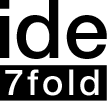cantrills filmnotes on "l-li-obo"
Cantrills Filmnotes:
On "L-LI-OBO", video poem by Ide Hintze
"L-LI-OBO" is an audio-visual poem.
"L-LI-OBO" is the result of an audio-visual development in the tradition of Sound Poetry, Phonetic Poetry, Poesie Sonore.
It is an example for the kind of poetry which is not written and not made for reading. It is an example for a kind of poetry which is based on the very old, archaic elements of human poetry:
phonetic sounds; nonverbal speaking; noises of the tongue, the mouth, the vocal chords; writing letters, writing pictures but not in the mneaning of alphabets; producing melodies, producing rhythms with the naked, untrained, human speaking-voice; making body rituals, wearing cultic cloths; celebrating holy dialogues; etc.
"LI-LI-OBO" is the recording of a dialogue between a "screen-poet" and a "real poet".
The screen poet is 62-years-old Henri Chopin. He is one of the European pioneers of the International Sound Poetry. Together with Francois Dufrêne, Bernhard Heidsieck, Brion Gysin, he, after Raoul Hausmann, Kurt Schwitters, the Dadaists, was one of the first poets who used the tape recorder to produce poetry. Henri Chopin embodies the knowledge that written poetry, the poetry of the books, the printed magazines has lost its prominent meaning within the history of human literature and that the new beginning is the spoken poetry, the poetry of the sound tapes, video tapes, etc.
In "L-LI-OBO" Chopin, the French poet now living in London, appeares as the "screen poet". He is making sounds, words, noises, gestics, mimics out of the video screen. Ide Hintze, the "real poet", acts around the video screen: talking, asking, screaming, jumping, making sounds, words, noises, etc. in dialogues with the screen poet.
The different phases of the dialogue reflect different questions like: what is a word in combination with a body?; what is a sound in combination with the language?; is there an international language of sound, of phonetic sound which can be easily understood all over the world?; even better than Esperanto?; what is the human speaking-voice in combination with a microphone, with a camera?; what are the erotic combinations between a poet and his poetic tools of work?; what is "THE WORD", the archaic, utopic word?; what is the sign; what is the sound of the word; etc.
À propos de L-LI-OBO
À la recherche du poême qui contient les mystéres, l'eleve de la poésie (Ide Hintze de Vienne) a rencontré un nouveau maître (Henri Chopin de Paris) qui lui a montré que: avec Beckett, Joyce, Proust, la littérature, en tant que poésie du livre, de la lecture et de l#ecriture, a pris fin; et qu'avec les poétes sonores (Dufrêne, Heidsieck, Chopin, Rühm, Jandl) elle a repris naissance en tant que poésie du magnétophone, de la parole et de l'écoute. La poésie de la lettre n'est plus porteuse de mystère! Alore sois acoustique! Laisse entendre ta voix!
L'eleve se revêt d'un habit de lettres et provoque un dialogue au cours duquel les couches souterraines du discours animo-humain, producteur de transes sont libérées et évoluent en élément sonores ryhtmiques et mélodieux.
Et comme l'eleve est de deus générations plus jeune que le maître il utilise, à la place d'un magnétophone (ou bien d'un crayon ou d'une machine à écrire), un appareil vidéo avec lequel il transforme le maître en monitor-oracle, il se transforme en caméra-initiande et il transforme la poésie acoustique en poésie audio-visuelle (Découvrez-moi l'alphabet des couleurs, de l'irruption de la lumière, des souvements du corps!).
"L-LI-OBO" was produced in Vienna, Austria, May 1983, by Ide Hintze who has been working in poetry since 1973, and with other media: book, film, video, audiotape, theatre, record, performance, politics, since 1978.
"L-LI-ORO-TOTI"
(Excerpt from "L-LI-OBO")
Description / history:
"L-LI-ORO-TOTI" is the realisation of erotic vibrations
between the poet and his poetic tools,
between the poet and the microphone,
between the poet and the monitors,
between the poet and the screenpictures,
between the poet and the letters of his clothes,
between the poet and the growing of "the word",
between the poet and the growing of space,
between the poet and the growing of time,
between the poet and the speaking voice,
between the poet and the video camera,
between the poet and the lights,
between the poet and the poetry,
between the poet and the poet,
between the poet and his animal body,
between the poet and his human body,
between the poet and his divine body,
between the poet and his tools.
"L-LI-ORO-TOTI" is the realisation of the erotic sounds on the human word. The acoustic dimension is the whispering, the groaning, the silence of the human voice in dialogue with the poetical video equippment. The melody, the rhythm of the voice is harmonized with the sounds of the loudspeakerds. The microphones were adjusted to these melodies, these rhythms, these harmonies.
"L-LI-ORO-TOTI" is the realisation of the erotic pictures on the human word. The visual dimension is the moving, the kneeliong, the crouching of the dressed and undressed human body in dialogue with the poetical video equippment. The colours of the skin, the colours of the dress are harmonized with the colours of the wood which is used for the placing of the monitors and of the screenpictures. The lights were adjusted to these colours, these harmonies. The lights produced them also.
(cantrills filmnotes in: cantrills filmnotes, a review of independent cinema and video edited and published by arthur and corinne cantrill. numbers 45, 46 Double Issue, ISSN 0158-4154, melbourne, australia, october, 1984)
(It is unclear which parts of the text are by the reviewers, which parts are by Ide Hintze or quotation of remarks by Ide Hintze. Also unclear: the reason for mixing french with english. -- the transcribers)
